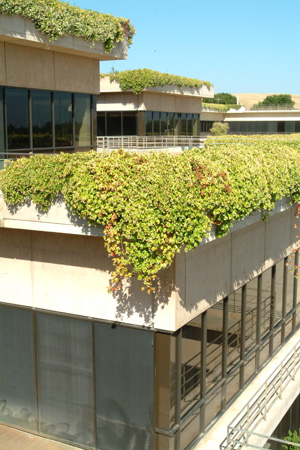This article is more than 1 year old
PARC turns 40: mice, money, and the new interwebs
A place whose time has come. Again
PARC at 80?
The big question: where will PARC be on its 80th anniversary? In 2050?
PARC's director is setting his sights more modestly - Bernstein's looking just 10 years out, to 2020 with the work on CCN. "Just getting through to 2020 is as far as we're thinking now," he said. Peering further out is a risky proposition, given massive changes in computing that succeeded PARC's formation in 1970 and those first ideas. "Forty years back when PARC was started... it's incredible the nature of change that's taken place," Bernstein said.
The future is an unpredictable place, it seems.
"CCN, if adopted, will have a real transformative impact on the way people consume information, and the performance of the network will change," he said. Away from computing: he's optimistic about clean technology and creating liquid fuels from carbon-dioxide capture, and work in thermodynamics for greater energy and power efficiency.

PARC today: still on a journey and making progress?,
(photo by Gavin Clarke)
St. Claire's excited by the potential for CCN and also sees opportunity in imprinted electronics and ethnography, especially in Japan and South Korea that are keen to move from being "fast followers" to innovators. "That is a perfect place for us to play," she said.
PARC's history is inspiring. In the early 1970s it quickly laid the foundations of modern personal computing and networking. Fans of these contributions are not difficult to find, with Shuttleworth and Cutting both ready to praise its breakthroughs on technology work that was validated by virtue of the fact others widely adopted them. Even yoked by Xerox, PARC was something of a business success because it added to the parent's multibillion-dollar bottom line with innovation in printers and copiers - a story Seely Brown says is often overlooked.
Further, PARC achieved all this on a relatively small staff - around 250 researchers compared to three thousand working at Bell Labs, which gave the world Unix, over on the East Coast.
The history of PARC is also frustrating - and painfully slow for something positioned to sift the fast-paced flow of technology and new ideas. PARC was restricted by very the parent that gave it its liberal charter in 1970, a fact that saw much of the early talent pull the ripcord. Even rebirth in twelve years later failed to provide the operation the clean break it really needed, and only now - forty years into the whole PARC experiment - does the proper business acumen actually seem in place.
St. Claire believes that it's the history of innovation that'll help her in her work winning new business and expanding operations – and help PARC capitalize on its new thinking and innovations.
"I thought it would be a lot more challenging than it actually is here," she said of the job after 12 months. "I was once on the sales side at very small company, and trying to get an audience with people was very different. I'm on the sales side at PARC, and our name and reputation extends quite a bit."
"We are a relatively small company, as we exist as a subsidiary. If you were any other small company and not PARC, people would be concerned about: 'Do I want to form some kind of long-term relationships with you as an OEM?" Our name really helps us overcome a lot of that concern and certainly creates a degree of excitement." ®
